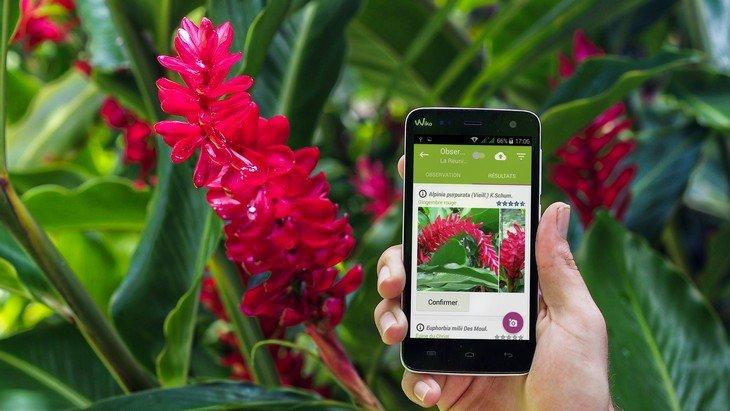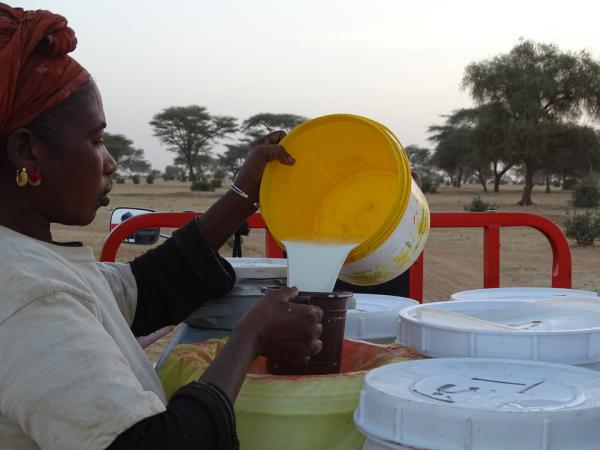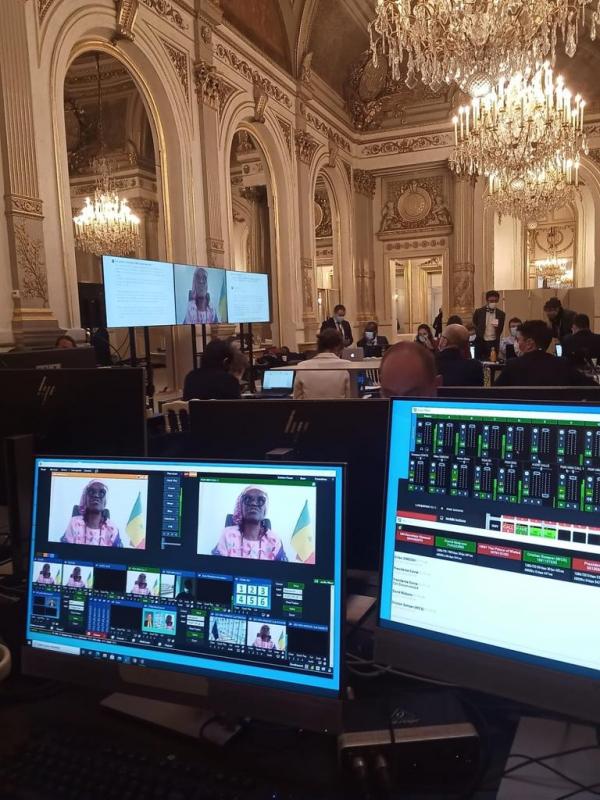Describing, identifying and naming plants is not easy for amateurs starting out in the demanding, complex field of botany. A few years ago, researchers from CIRAD and their peers set out to help, by developing plant identification software tools based on automatic photo analysis.
Pl@ntNet began when a digital science researcher met a botanist. They had an idea: to make botany accessible to the general public, using digital tools and information sharing. Their project, which they mulled over throughout 2007 and 2008, was officially launched in 2009. It was funded by the Fondation Agropolis and associated four research organizations – CIRAD, INRAE, INRIA and IRD – and a French-speaking botanists' network, Tela Botanica. The project relied on expertise, methods and datasets built over almost fifteen years by the various teams involved, and in 2013, gave rise to a mobile app, Pl@ntNet.
Botany is just a click away
The app is easy to use. All users have to do is use their smartphone to photograph a part (leaf, flower, fruit, stem or bark) of the plant they want to identify, and send their picture via the Pl@ntNet app. The system compares it to the 2 900 000 or so images already in the base, and suggests the names of the species most like the picture. It is then up to the user to decide which of the results actually corresponds to their plant.
"It's absolutely brilliant. I'm an amateur botanist and I find Pl@ntNet really useful. It's sometimes difficult to choose between two suggested species, obviously, but that forces me to look more closely to find additional data" (Jaques-Martial, September 2020)
"It's really quick and easy, and I like the fact that it brings up several photos of a given plant, from different angles, so you can check the result. Congratulations to the developers!" (Ekaterina, August 2020)
"Thanks for this great app! Naturally, the result isn't 100% reliable, but it's still really impressive, and makes several suggestions in the event of doubt. And I love the idea that my observations might be used for scientific studies. Well done!"
Pl@ntNet has attracted a range of users, from amateur botanists to experienced researchers, from a number of fields (research, education, agricultural research, ecotourism, trade, etc.) and more than 150 countries. In all, nearly 16 million people have used this new way of accessing botanical knowledge, and helped to develop it. To date, the app has been translated into some 24 languages, covers almost 29 000 species, and is growing rapidly worldwide.
A participatory science tool ripe for upscaling
Apart from its fun side, which spices up nature walks and changes the general public's awareness of their natural environment, Pl@ntNet is above all a great tool for researchers. The tens of millions of observations gathered are a mine of new information, and analysing them will boost knowledge of the plant kingdom and help preserve biodiversity.
Research is shifting position. Whereas 30 years ago, naturalists primarily wanted to inventory species, they're now much more interested in the consequences of climate change and in biodiversity loss. With Pl@ntNet, we're developing a new kind of research that allows collective knowledge generation. The system is constantly being improved, fuelled by its users and by scientific results. With hundreds of thousands of users each day, it is an on-the-ground species monitoring tool that no single research organization could ever afford to develop.
Pierre Bonnet
Biologist at CIRAD and Pl@ntNet coordinator
The global changes we face mean that it is more crucial than ever to know more about our environment in order to anticipate its evolution and to safeguard it.
Pl@ntNet has already had major impacts in two main fields. Firstly, in the field of natural and cultivated ecosystem management in particular, it has served to supplement existing maps of species distribution.
As regards the training courses we run with staff from the Office français de la biodiversité, Pl@ntNet has proved to be a particularly userful tool for identifying plants and natural habitats. We are now working with the platform to adapt the tool, by adding information on protection status, threats to species, etc.
Sylvain Abdulhak
Botanist who heads the "knowledge" department at the Conservatoire botanique alpin
Secondly, in the field of education, with the development of new teaching arrangements, as shown by the current collaborations with environmental education associations.
In a year of using Pl@ntNet, we have gone from 196 to 500 photos of species, with a total of 650 species recorded. In doing this, many little-known plants have been identified and added to national herbaria. Moreover, after identifying a highly invasive species, the conservancy introduced an early warning system for invasive species, using Pl@ntNet. Plant knowledge is no longer restricted to just a small group of botanists, and is now open to an infinite number of users.
Susan Brown
Co-manager, Lewa Wildlife Conservancy, Kenya
And Pl@ntNet has not finished yet. The potential by-products of the app include botanical guides to geographical areas, such as national parks and state-owned forests, or specific ecosystems (for instance micro-projects on the Cévennes National Park in France and the Ordesa National Park in Spain. Standalone, offline operation and the possibility of downloading a database according to geographical location are also being developed, along with the extension of this visual recognition system to other entities or organisms such as plant pathologies.
Climate and agriculture: fields of use worth looking into
Other particularly promising developments are also on the horizon, such as real-time plant mapping, with a study of their phenology (the influence of climate variations on plant flowering and fruiting). This would serve to study the evolution of species over the year, taking account of all the available geolocalized botanical data and adding a temporal dimension. In turn, this should pave the way for long-term monitoring of the effects of climate change on vegetation.
In the field of agriculture, too, there could be many possible uses: by fitting the Pl@ntNet app to machines such as drones or autonomous robots, as is currently being tested by the ANR WeedElec project. This would make it possible to identify weeds in crops automatically, at an early stage, for instance.
A veritable real-time botanical observatory
Pl@ntNet is constantly being developed, thanks to the feedback from its users, better detection of errors, scientific assessments of its visual search engine, management of bias and better large-scale data mining.
By digitizing and compiling vast volumes of digital data, it has become a veritable real-time participatory botanical observatory.



























.jpg)
